Mercedes-Benz Engine Oil Mixing with Coolant Looks White
Have you noticed that the coolant in your Mercedes-Benz has become light brown, as if someone replaced it with a cappuccino or something similar? If that’s the case, you almost certainly have a real problem that requires immediate attention. The most common problem is that Engine Oil is Mixed with Coolant.
This awkward-looking sludge is a mixture of oil and coolant, meaning these two liquids come in contact somewhere within your engine or cooling system. Still, identifying the culprit may not be simple and can sometimes result in unnecessary repairs and expenses.
To help you avoid such situations, we will go to several common faults that cause this. In addition, we will find out how to determine which of them is the most likely cause and what to do to solve the issue.
Common Causes
1. Oil Cooler
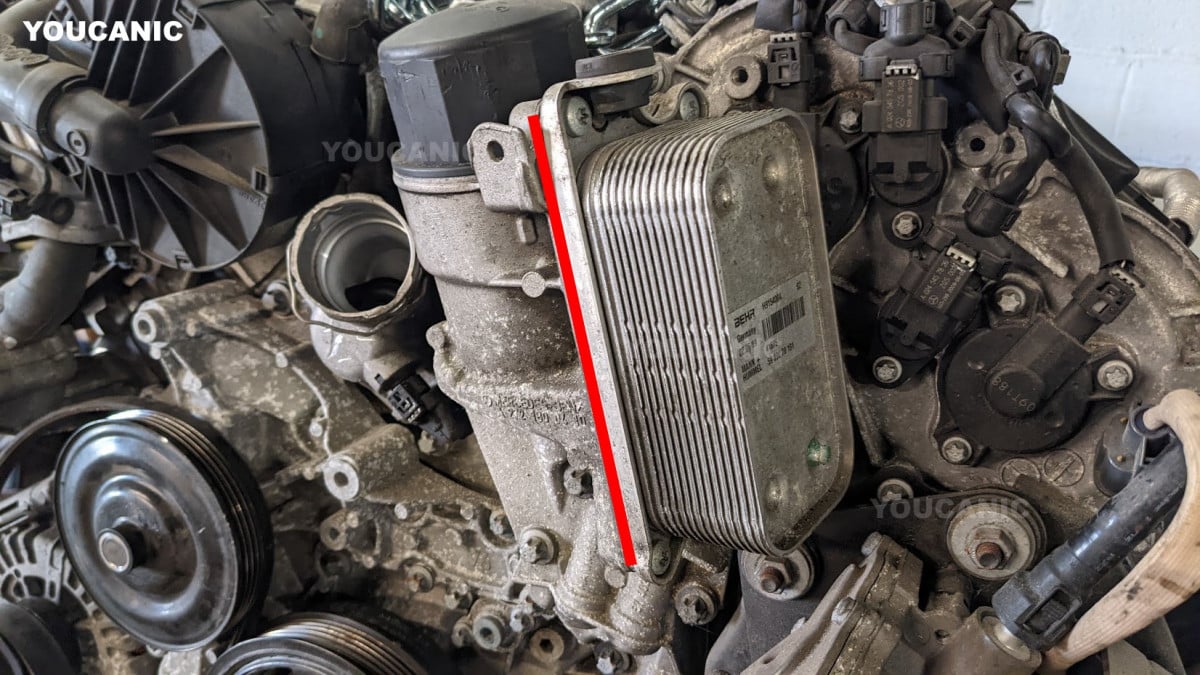
Most Mercedes-Benz engines have an oil cooler, although not all car owners know about it. These are radiators through which coolant circulates and keeps the oil at an optimum temperature. Replacing the oil cooler gasket is a simple repair that can be completed at home and will, in most cases, fix the problem.
In some cases, the metal core of a cooler may crack, allowing the oil and coolant to mix when the engine is running. Of all possible causes of such symptoms, a leaking oil cooler is the most likely one. Replacing this component is relatively easy on most Mercedes-Benz models.
2. Blow Head Gasket
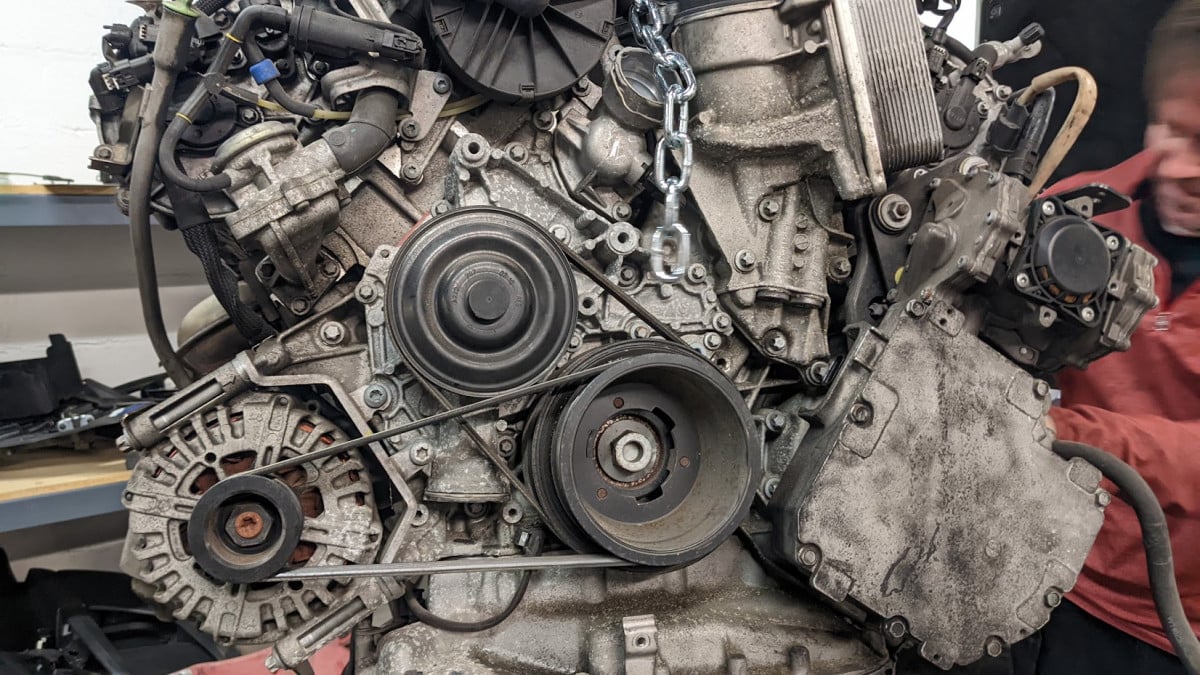
Despite their differences in design and configuration, all engines have a head gasket between a cylinder head and an engine block. Its job is to ensure an airtight seal between these components that is strong enough to withstand the combustion process. The gasket also has many holes that serve as channels through which oil and coolant flow.
This is where mixing these liquids may happen, as the head gasket can crack if the engine overheats. Like head gaskets, the cylinder head itself may crack if overheated.
This is by far the most expensive and complicated failure to repair, as cracked heads need to be replaced with new ones. To make things worse, not all workshops can determine if the head is faulty, as this can only be done using specialized testing equipment. Luckily, most Mercedes-Benz engines are not prone to these failures, although they can still happen.
3. Radiator
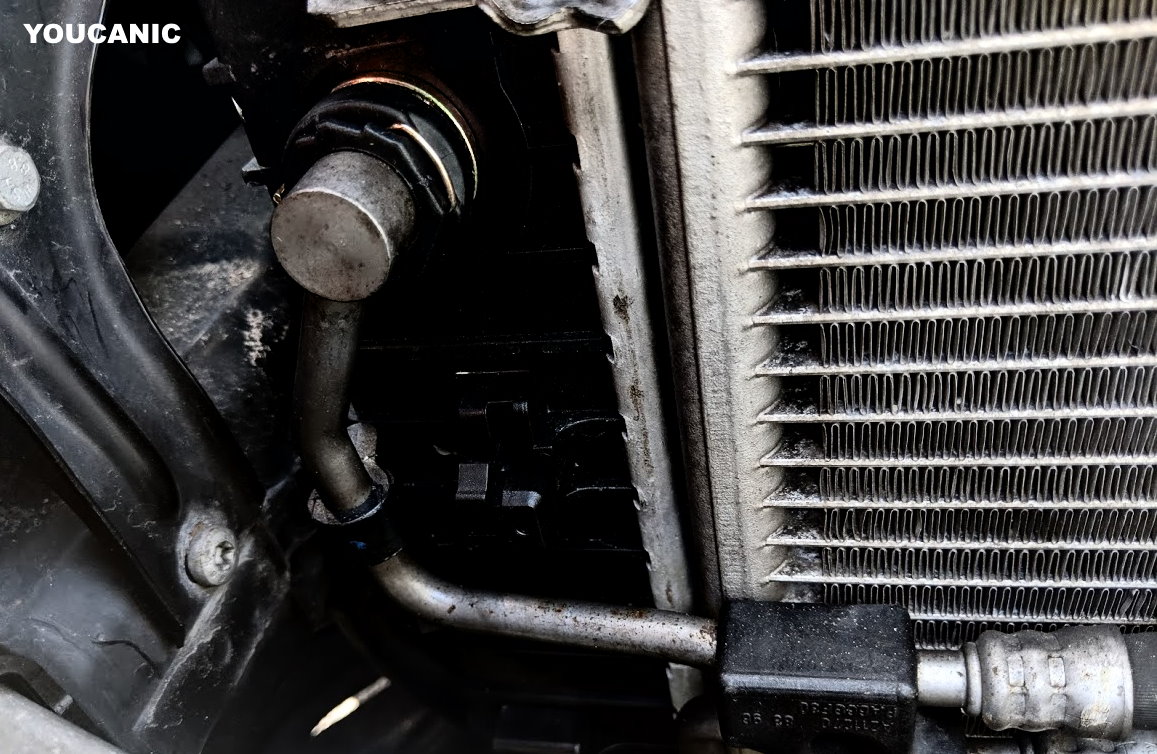
An engine oil cooler is not the only such component, as cars with automatic transmissions have one for the gearbox. In most cases, this cooler is an integral part of a radiator, where it may develop a crack.
If that happens, the transmission fluid will mix with coolant. To fix the issue, owners will have to replace the whole radiator.
4. Milky white under the oil cap
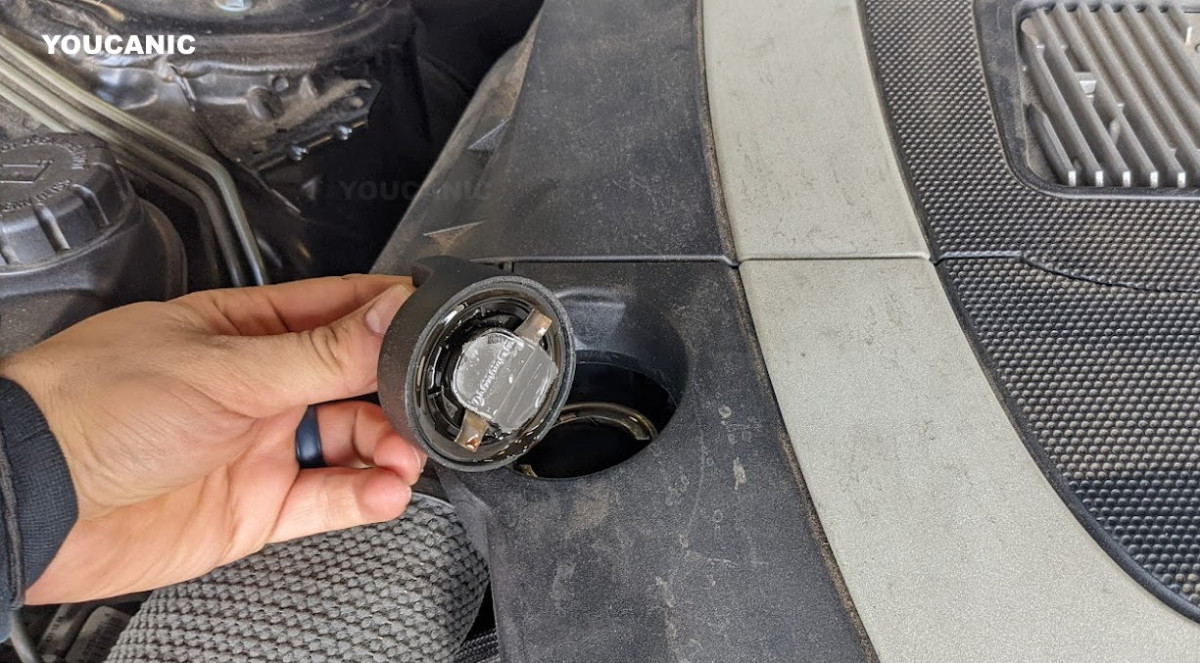
This is usually caused by condensation inside the engine, which is common if the vehicle is used for short trips. Wipe off the bottom of the oil cap and take longer trips, making the moisture evaporate.
You can perform an oil change to confirm the problem is not a blown head gasket. You should check for a blown head gasket if the oil is white or milky.
Frequently Asked Questions
Can I drive my car if it mixes coolant and oil?
Whatever may be causing your car to mix coolant and oil, the engine may seem to be running fine. This could tempt you to drive it in such a condition for some time. There are, however, several reasons why this is not a good idea and may have serious consequences.
The leak may be such that it allows coolant to get into your engine or transmission. It will dilute the oil inside and affect its ability to lubricate moving components, which causes extensive mechanical wear. And even if this doesn’t happen, a coolant contaminated with oil does not take away temperature as it should.
As a result, your car will likely overheat under severe loads, such as when towing a trailer or driving uphill. There are also some long-term consequences to consider, with the deposits within the cooling system being one of them. The longer you use your car in this condition, the layer of sludge becomes thicker and harder to remove afterward.
How can I figure out what is causing coolant and oil to mix?
Several issues may cause the oil and coolant to mix, and determining the actual culprit may not be straightforward. There are, however, a few simple tricks that can make this a bit easier, with checking the engine oil condition being the first step. If it is clear and without any traces of any sludge, it is most likely that the engine oil cooler is leaking.
This is because the crack inside its core is so small that it causes a leak only when the engine reaches running a temperature. And at that point, the oil is under higher pressure than the coolant. A similar will happen if the transmission oil cooler cracks, although this will not increase engine oil consumption.
As opposed to broken oil coolers, head gasket or cylinder head faults may cause additional issues. This can range from misfires and lack of performance to overheating and large amounts of thick white smoke from the exhaust. In addition, these problems are likely to cause the oil inside the engine to become white and sludgy.
What should I do to fix this issue?
After identifying which component is most likely causing the issue, the obvious next step is to replace it. In the case of the engine oil cooler, this is a relatively simple job that’s well within reach of the average do-it-yourself motive enthusiast.
Depending on the model, this usually comes down to undoing a few bolts and fitting a new cooler with corresponding gaskets. The situation is similar with the transmission oil cooler, although this usually requires the whole radiator to be replaced.
Repairing a cracked head gasket or cylinder head, on the other, is a much more elaborate job. This requires extensive expertise and access to specialized tools and equipment. So, if you have never done something like that, it would be better to leave this repair to a professional.
What can cause coolant to mix with engine oil?
Several typical cases where coolant and engine oil may come in contact. An oil cooler, whose metal matrix can break and develop a leak, is the most likely cause. It is also possible for a head gasket or cylinder head to crack if the engine overheats. Depending on the damage, this could also cause the mixing of oil and coolant.
Can a coolant mix with oil damage the engine?
If the coolant leaks into the engine, it dilutes the oil inside. This reduces its ability to lubricate moving components and causes extensive mechanical wear. And even if this happens another way around, allowing the oil to leak into the coolant, it can still be damaging. This is because such a mixture will not cool down the engine under high loads.
Conclusion
As we have explained, light-brown sludge inside a coolant tank indicates oil mixing with coolant. In most gasoline Mercedes-Benz cars, this will most likely be caused by a leak within the oil cooler. Other possibilities include leaking head gaskets and cracked cylinder heads, which may happen if the engine overheats.
Whatever is causing the issue, you should fix it without further delay. Otherwise, reduced lubrication and cooling could damage your engine and other drivetrain components. This problem may affect any Mercedes-Benz vehicle, including Sprinters with diesel engines.
We hope you find the Mercedes-Benz Engine Oil Mixing with Coolant Looks White guide helpful. Check these troubleshooting and repair guides for more help on your Mercedes-Benz.




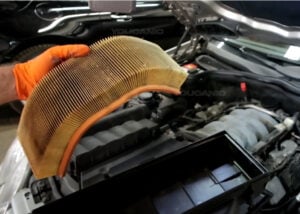





Great Details THANKS SO MUCH
I overhear mines may be no water in OIL BUT OIL is leaking.